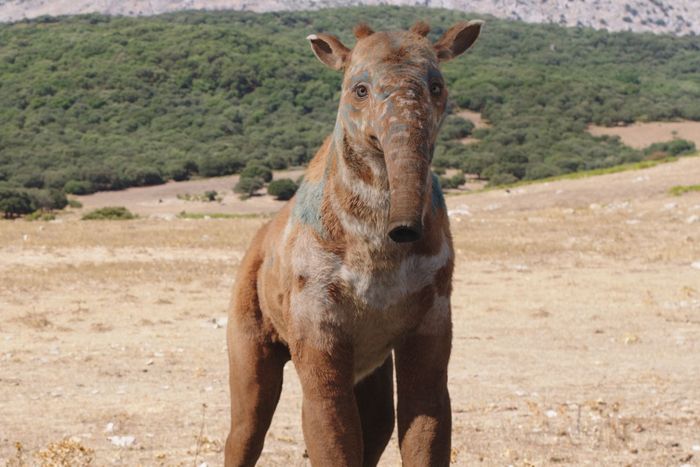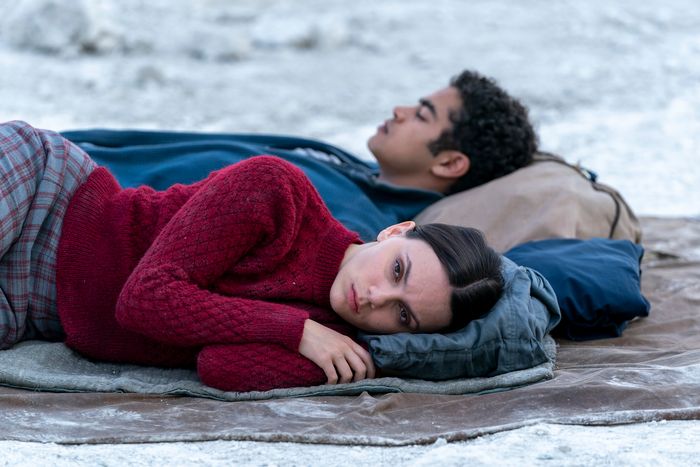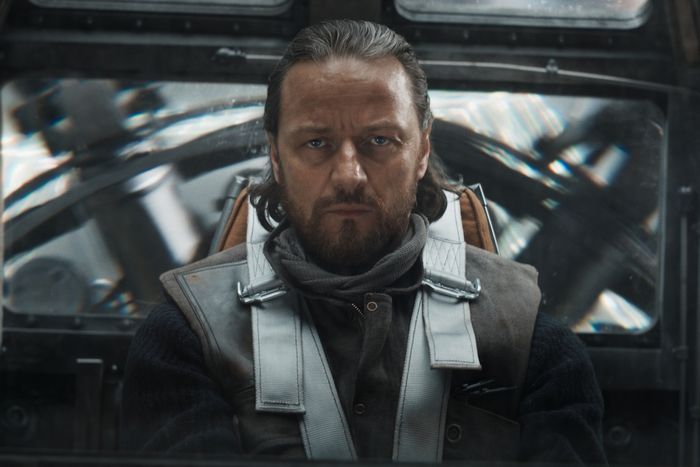
Occasionally, it is necessary to convene a conversation between Vulture writers to discuss an important and timely issue in culture. This time, Roxana Hadadi, Jackson McHenry, and Kathryn VanArendonk share their hopes and worries for the final season of the HBO and BBC adaptation of His Dark Materials, which has to tackle some of the most difficult and strange material from Philip Pullman’s book trilogy.
When the series adaptation of Philip Pullman’s His Dark Materials trilogy was announced, general consensus among book fans was that it had to be better than 2007’s The Golden Compass, which boasted a spectacular ensemble (Sam Elliott is the only acceptable Lee Scoresby!) but failed to capture the magical and mysterious essence of Pullman’s first book. Since its first season, though, His Dark Materials has been inconsistent: sometimes changing too much of Pullman’s work (like diminishing the importance of dæmons, presumably because of visual-effects costs), sometimes being a bit too obvious in its depiction of the patriarchy and fascism running through the Church, and sometimes delivering truly inspired casting decisions (ahem: Andrew Scott as Jopari). With the first two episodes of the series’s third and final season premiering tonight on HBO, Vulture’s Pullman-heads are curious: Can showrunner Jack Thorne and his team pull off the many wacky, absurd, and arguably heretical elements of the trilogy’s final book, The Amber Spyglass? Here are 11 characters, creatures, and concepts we’re keeping an eye out for.
Copious book spoilers ahead for The Amber Spyglass and possible spoilers for the final season of His Dark Materials.
Mulefa, how? A crucial part of understanding Pullman’s framing of the fall of Adam and Eve as a sort of quirk of evolution comes via … gigantic four-legged creatures that ride around on seedpods. In The Amber Spyglass, Mary Malone ends up in the world of the mulefa, sentient beings whose development sped ahead when, thanks to the influence of Dust, which is attracted to special trees in their world, they developed a way to hook into those trees’ seedpods and ride around on them. It’s like humans developing tools but much wilder. The challenge: portraying giraffe-rhino-horse-elephant creatures with their legs oriented in a diamond for optimal pod riding in a way that isn’t utterly ridiculous. Good luck. — Jackson McHenry
Sure, the mulefa are the big question, but don’t forget the tualapi! It’s as the old saying goes: For every good guy with a seedpod-based wheel-and-axle form of evolutionary fitness that also happens to be able to see a physical manifestation of the idea of knowledge, there’s a bad guy who looks like a wild-ass bird-sailboat thing. In this case, it’s the tualapi, evil water creatures whose wings are actually sails but who also seem kind of like crocodiles who lurk in the water and then leap out and chomp you. What the hell is that going to look like? — Kathryn VanArendonk
Are we going to actually see God? Pullman’s entire trilogy is about the intersection of fascism and organized religion and how the only way to reset our reality and fight our oppressors is through war. Lord Asriel is leading the uprising against the Authority, who has claimed to be God, and much of The Amber Spyglass is about that revolution, its battles, and its losses. The ideological through-line of Pullman’s final book in this trilogy is basically a shrug toward whether a true God, one who preceded the Authority, actually exists. “There may have been a creator, or there may not: we don’t know,” the angel Baruch says, and his lover and fellow angel, Balthamos, elaborates on this idea: “The Authority, God, the Creator, the Lord, Yahweh, El, Adonai, the King, the Father, the Almighty — those were all names he gave himself. He was never the creator.”
While hiding behind this story, the Authority has allowed the ruthless Metatron to rule in his stead and the Church (or Magisterium) to carry out awful behaviors in his name. All of that context makes the Authority a foreboding figure — until The Amber Spyglass reveals he’s a feeble entity exhausted and weakened by his old age, hiding in his Clouded Mountain chariot. Will this third season commit to the doubt, the skepticism, and a God-like figure who isn’t actually God at all? Those are all core components to this story that could elicit a strongly negative response, and that’s before you get to what ultimately happens to this character … — Roxana Hadadi
Will we see God die? Yup, God dies! Pullman’s description of God’s final moments, “a mystery dissolving in mystery,” are incredibly melancholy and a powerful counterpoint to the fist-pumping vibe of the corresponding scene in which Lord Asriel and Mrs. Coulter team up to kill Metatron, the Authority’s second in command, by dragging him into an abyss. Two storytelling extremes, both of which require tonal precision and non-goofy special effects. We’ll see! — RH
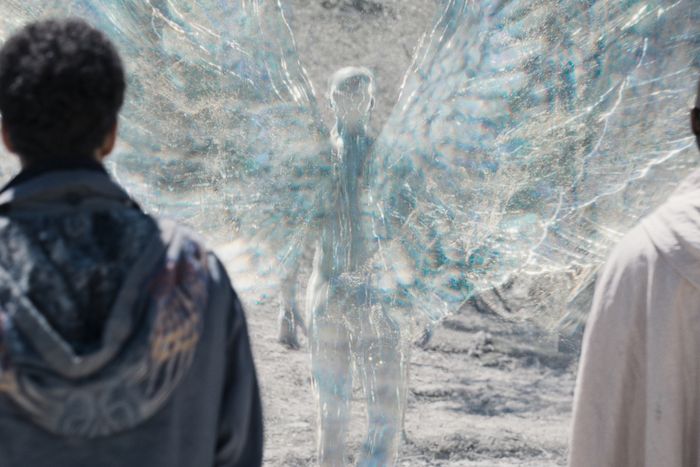
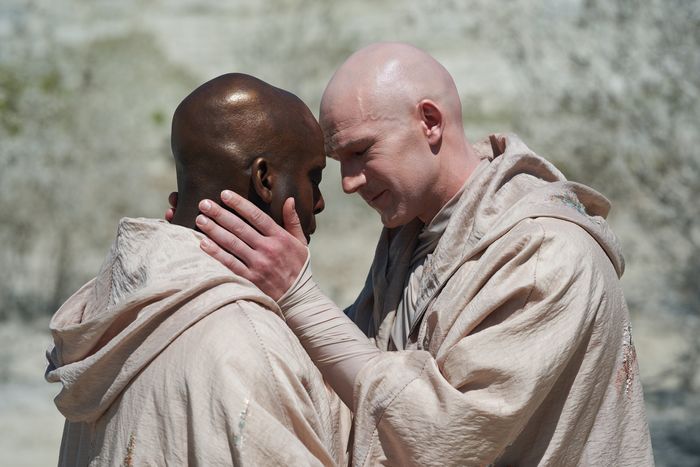
What about the hot, naked gay angels? Midway through The Subtle Knife, Pullman introduces the angels, pure beings of Dust who are involved in a fractious, Paradise Lost–style battle. Crucially, they are supposed to be haughty, hot, and nude all of the time, though their nudity is not supposed to be sexual, just an expression of their pure beauty. The HBO series gave a glimpse at some glimmering angelic figures at the end of the last season, but I have no idea how they’ll accommodate the nudity thing, which the BBC side of the producing equation wouldn’t allow for. Anyway, the love story between Baruch and Balthamos was crucial to me and probably some other gay nerds growing up, so don’t mess it up! — JM
How will the army of the dead look? Speaking of “non-goofy special effects,” I have a specific concern for the ghosts who Will and Lyra meet in the land of the dead who agree to join the two teens as they use the subtle knife to cut a window back into the land of the living and leap into the fray to fight the Spectres. In the book, this scene is invigorating because of the immensity of the ghosts’ trust in Will and Lyra and because of how zealous they are in their attack: “The ghosts clambered out of the earth, pale forms paler still in the midday light. They had nothing to fear anymore, and they threw themselves against the invisible Spectres, grappling and wrestling and tearing at things Will and Lyra couldn’t see at all.” That could look amazing in the television medium, or it could look like this:
I’m sorry to the Dead Men of Dunharrow, but Peter Jackson and his visual-effects team, in a rare misstep for The Lord of the Rings film trilogy, really made them look like Slimer, didn’t they? The ghosts of John Parry and Lee Scoresby (even Lin-Manuel Miranda’s version of the Texan cowboy) deserve better than that. — RH
What about before they’re even an army? What about when they’re just Deaths? In a long list of harrowing creatures and scenes, the idea that people are always being followed around by a ghostlike version of themselves who represents their own death is way up there on the intensity scale! It’s such a gorgeous and frightening idea, especially when you add in the detail about how the Deaths know it bothers people to see them, so they try to hide in little corners just out of sight. But like so many other concepts in this series, it’s much easier to imagine that scenario than it is to actually depict it in a way that carries any of the same heft. The Deaths should give you shivering weirdsies; anything less is cheap! — KVA
But also there are harpies. In that trip to the underworld, Lyra and Will have to contend with actual harpies, who are sort of the prison guards of the realm. Harpies are a known mythological creature, but still it’s hard to imagine trying to depict them in a way that’s convincing among the more steampunk design of His Dark Materials. Will we be able to bear it when they screech onscreen? — JM
And the tiny assassins who ride dragonflies? Lord Asriel has some capable allies in the form of Gallivespians Chevalier Tialys and Lady Salmakia, Lilliputian-size humans who ride around on dragonflies and carry powerful toxins to sneak attack their enemies. HBO and the BBC are already pretty resistant to spending too much of their budget on putting dæmons onscreen, but they better not scrimp on the dragonfly footage. They use those things like helicopters! Crucial, truly, to understanding this bonkers story. — JM
How do you tell an onscreen story about the internal experience of puberty? You know that social-media format where there’s some image of a heartthrob with floppy hair and a puka-shell necklace, or a .gif of Bernard, the hot elf from The Santa Clause, and the commentary is like, “This is what made me enter puberty”? Really, all of His Dark Materials is leading up to a moment like that, and it’s always been a little unclear how hard the show is actually going to go in that regard. It’s already been a point of some contention for the books — the U.K. edition of The Amber Spyglass includes a much longer description of this moment (including the line “She had never been on a roller-coaster, or anything like one, but if she had, she would have recognized the sensations in her breast: they were exciting and frightening at the same time, and she had not the slightest idea why”). The U.S. version is much shorter, skipping straight to a metaphor about a key unlocking doors Lyra hadn’t even known were there. It’s possible the TV version will just be one long shot of Lyra’s face looking … perplexed? How can you get anywhere close to the intensity of that experience as it’s happening in that moment? — KVA
How will this series end? Pullman’s book concludes with a mixture of triumphs and tragedies, ultimately leaving Lyra and Will separated and living in their own worlds. Each teen tries to settle back into their “normal” lives with Mary Malone taking Will under her wing and Lyra returning to Jordan College, where she decides to properly study the alethiometer now that she can no longer intuitively read it. Lyra is inspired by a future in which the citizens of endless worlds could, separately but similarly, work to build “the Republic of Heaven” now that the “Kingdom of Heaven” has been disbanded. But that’s not the end of Lyra’s story: Pullman next wrote Lyra’s Oxford, a novella in which Lyra is confronted with the effects of her involvement in the Amber Spyglass war. He’s now two books into another trilogy, The Book of Dust, which explores both Lyra’s infancy and the people who cared for her then as well as her young adulthood as conservative forces rise and once more target her. No other adaptation of Pullman’s novels has been announced, but will His Dark Materials leave an open door for those stories? There’s precedent in the show: A scene from La Belle Sauvage was made into a flashback for James McAvoy’s Asriel. And there’s a desire: Series executive producer Jane Tranter said in 2020 that the creative team would be “very excited” to tackle the Book of Dust trilogy next. Pullman is nearly 300 pages into the final book, so I don’t think a nod at the end of this show to the next dense, fantastical, anti-oppression trio of Pullman books is out of the question. — RH


